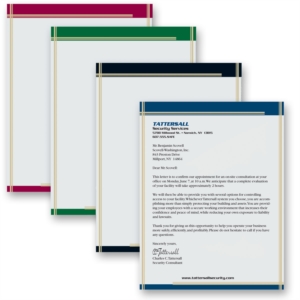

While business letters can often be compelling and even fun to read, they should also showcase proper punctuation. Punctuation rules for business letters are fairly straightforward, but you can mess them up as early as the salutation.
Business letters can feature one of two types of punctuation based on the punctuation marks you use after your salutation and closing. Mixed punctuation uses a comma after the salutation and a comma after the closing:
Open punctuation omits any type of punctuation after the salutation and closing:

The body of the letter follows standard punctuation guidelines, which it never hurts to review. A big change over the years has been the use of one space, instead of two, after a period. Semicolons are used when you’re combining two independent clauses. Example:
Commas have a reputation for being tricky, but two main rules can help you use them properly in business correspondence. The first is to use a comma before a short conjunction when you’re combining two independent clauses. Example:
The second comma rule is not as strongly set in stone, and it involves the use of the comma when listing three or more items. It even has a special name: the Oxford Comma. The rule depends on whom you ask, with the AP Stylebook omitting the Oxford comma before the conjunction. Example:
Your other option is to include an Oxford comma before the conjunction. Example:
Both options are technically correct, and the latter can be helpful if omitting the comma changes the meaning of the sentence. Example:

Once you’ve mastered the punctuation rules for business letters, you’re free to be as creative as you like with your business letterhead or decorative border paper. The whole properly punctuated package will confirm your professionalism and perhaps even make for a fun read.
Looking for new stationery or letterhead? Check out the selection at PaperDirect.



